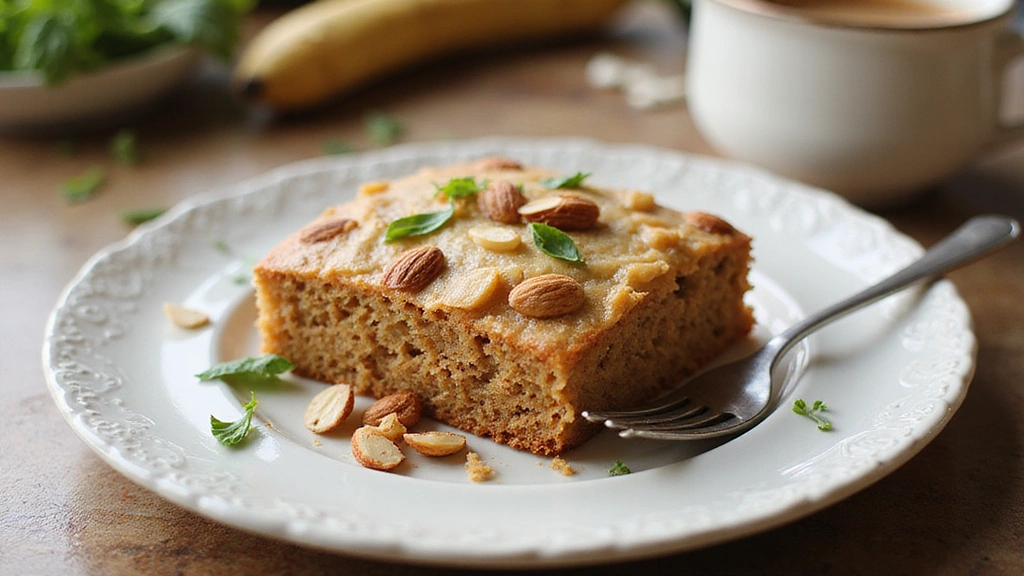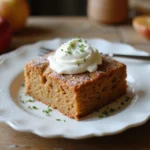This delightful Almond Flour Coffee Cake is a perfect blend of moistness and rich flavor, making it an ideal treat for any occasion.
The nutty aroma of almond flour combined with a touch of cinnamon creates a comforting experience that warms the heart.
I first fell in love with this recipe during a cozy gathering with friends, where the cake was the star of the dessert table.
Whether served at brunch or as an afternoon snack with coffee, this gluten-free coffee cake is sure to impress your guests.
The History and Cultural Significance
• Almond Flour Coffee Cake Recipes Gluten Free And Moist traces its origins to Western baking traditions in the late 20th century, where it was originally created by health-conscious bakers.
• The dish evolved over decades as gluten-free alternatives gained popularity, eventually becoming the beloved version we know today.
• In many households, this cake traditionally appears at brunches and family gatherings, symbolizing comfort and togetherness.
• While many variations exist across different regions, the authentic version maintains a moist texture and a rich almond flavor that sets it apart from imitations.
Recipe Overview
Nutritional Information (per serving)
Ingredients
Essential Equipment Guide
Mixing Bowl: A sturdy mixing bowl is essential for combining ingredients evenly. Look for one that is large enough to accommodate all the batter without spilling. Glass or stainless steel options are ideal for monitoring mixing progress.
9-Inch Round Cake Pan: This specific size ensures even baking and proper rise. A non-stick or well-greased pan helps the cake release easily without sticking. Consider using a light-colored pan for even heat distribution.
Hand Mixer or Stand Mixer: An electric mixer is crucial for achieving the right texture by aerating the batter. If you don’t have one, a whisk can work; however, it will require more effort to achieve the same level of fluffiness.
Preparation Methods
Mixing Dry Ingredients: This technique involves combining all the dry ingredients to ensure they are evenly distributed. It matters because it prevents clumping and ensures even rising. Use a whisk to aerate the flour and sugar, and sift if necessary for extra lightness.
Creaming Butter and Sugar: This method helps to incorporate air into the batter, leading to a lighter cake. It’s crucial for texture; beat until the mixture is light in color and fluffy. Use a hand mixer for best results, scraping down the sides of the bowl as needed.
Folding in Wet Ingredients: Gently incorporating wet ingredients into the dry helps maintain the aeration created in earlier steps. This method is key for keeping the batter light. Use a spatula and a gentle motion to avoid deflating the batter.
Step 1: Prepare Ingredients
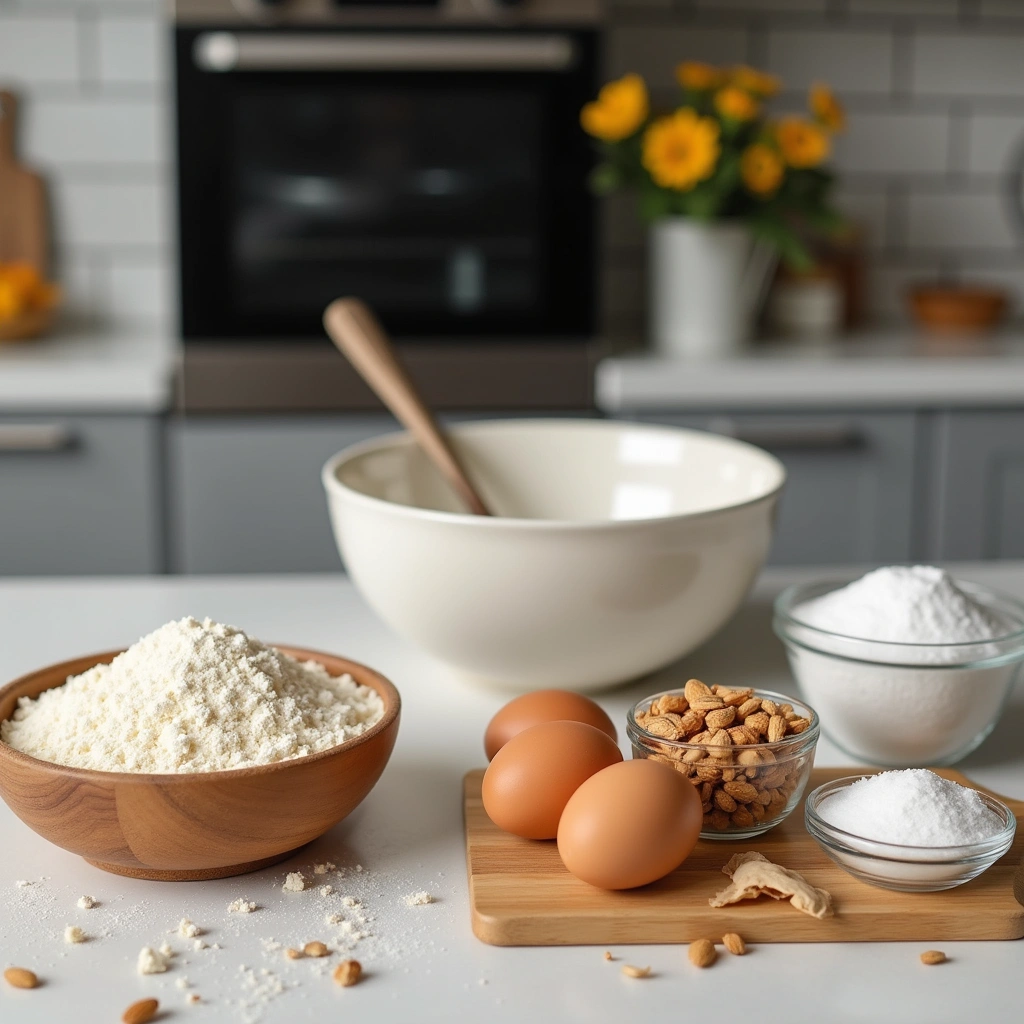
Start by gathering all your ingredients on the countertop for easy access.
Measure out the almond flour, sugar, and other dry ingredients into separate bowls.
This ensures you have everything ready to go, minimizing errors during preparation.
Preheat your oven to 350°F (175°C) to have it ready for baking later.
Step 2: Mix Dry Ingredients

In a large mixing bowl, combine the almond flour, baking powder, cinnamon, and salt.
Use a whisk to blend these dry ingredients thoroughly, ensuring no clumps remain.
This step is vital for even distribution of the leavening agents.
Set aside the bowl once mixed well.
Step 3: Cream Butter and Sugar
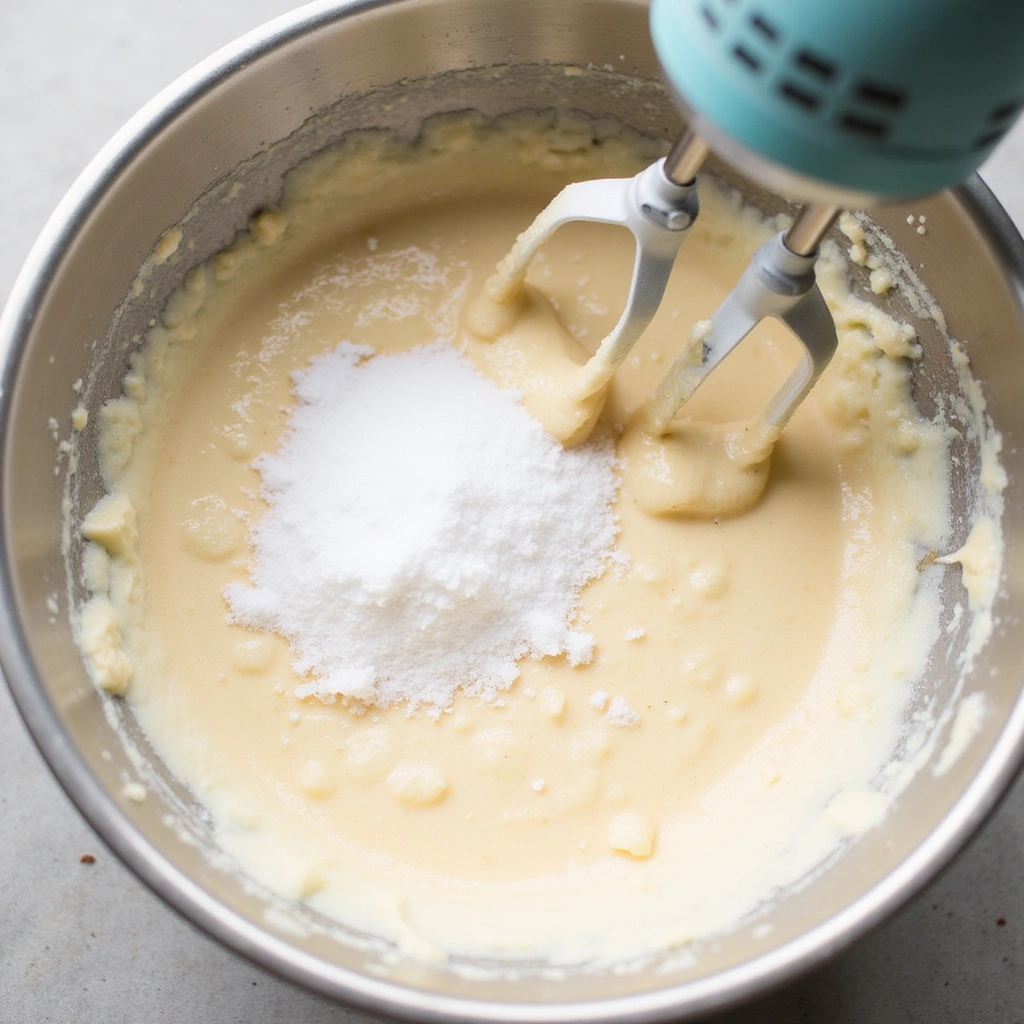
In another bowl, combine the granulated sugar and melted coconut oil.
Using a hand mixer, beat the mixture until it becomes light and fluffy, about 3-5 minutes.
This step is essential for incorporating air, which contributes to the cake’s rise.
Scrape down the sides of the bowl to ensure all the sugar and oil are well mixed.
Step 4: Add Eggs and Buttermilk

Add the eggs one at a time, mixing well after each addition.
Then, pour in the buttermilk and mix until well incorporated.
This creates a smooth batter that will help keep the cake moist.
Be careful not to overmix, as this can make the cake dense.
Step 5: Combine Wet and Dry Ingredients
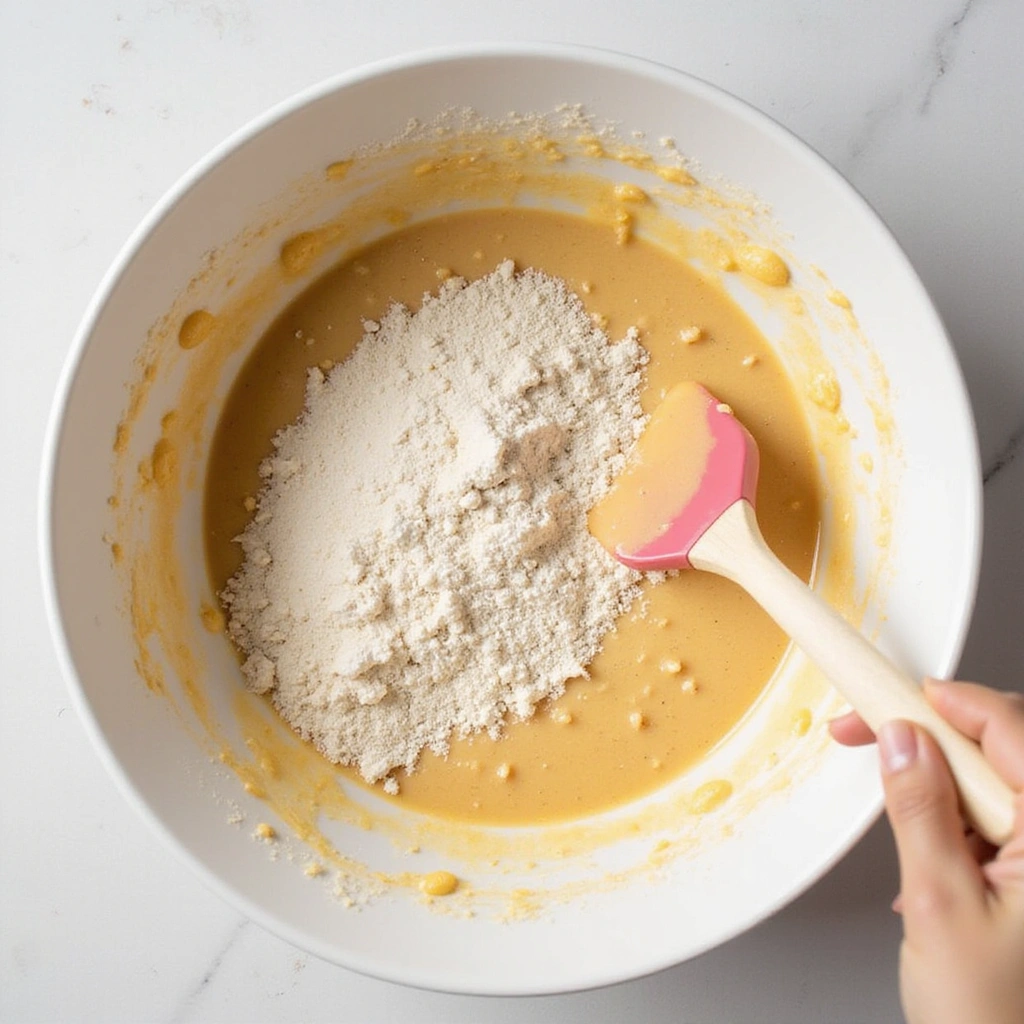
Gradually add the dry ingredient mixture to the wet ingredients.
Use a spatula to gently fold the mixtures together until just combined.
Be cautious not to overmix, as this can lead to a dense texture.
The batter should be thick but pourable.
Step 6: Prepare the Cake Pan
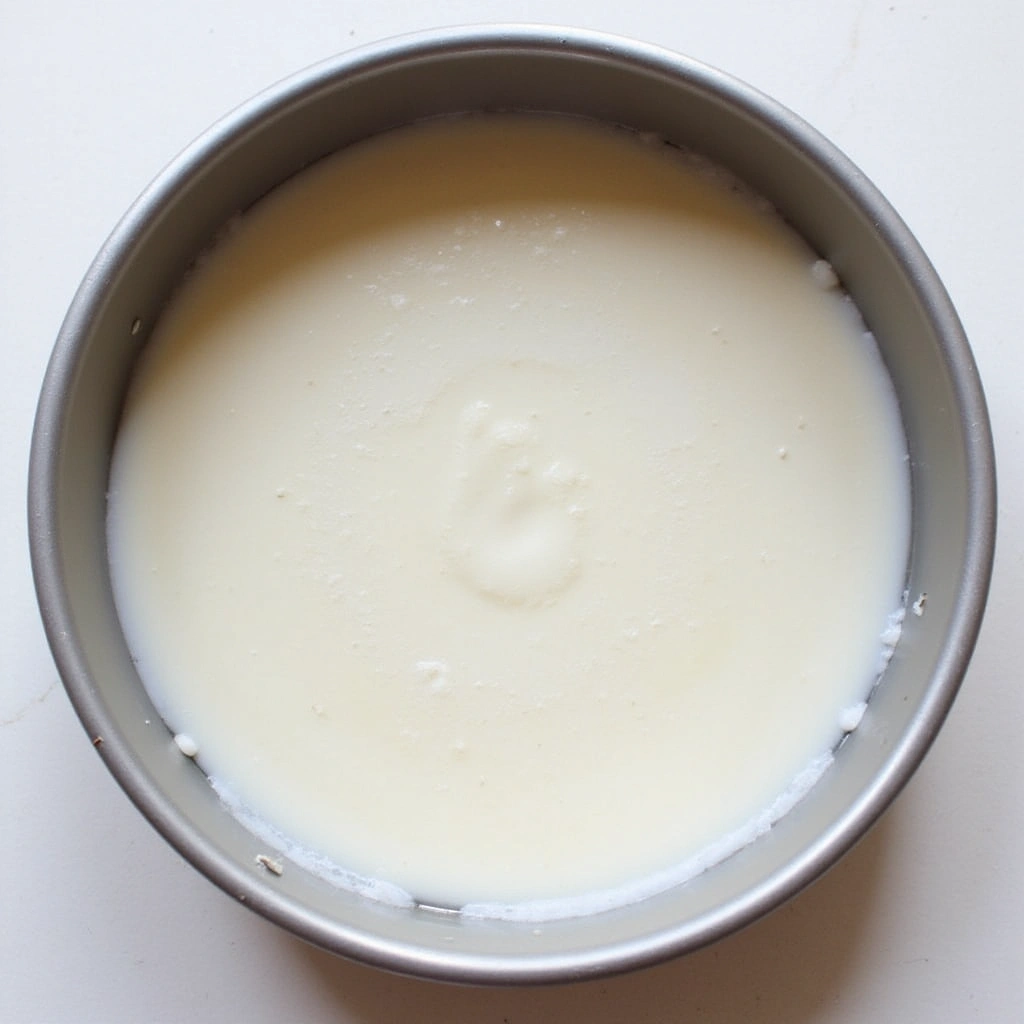
Grease a 9-inch round cake pan thoroughly with coconut oil or line it with parchment paper.
This will prevent the cake from sticking during baking.
Ensure that the entire surface is covered for easy release.
Preheat your oven to 350°F if not already done.
Step 7: Pour Batter and Add Topping
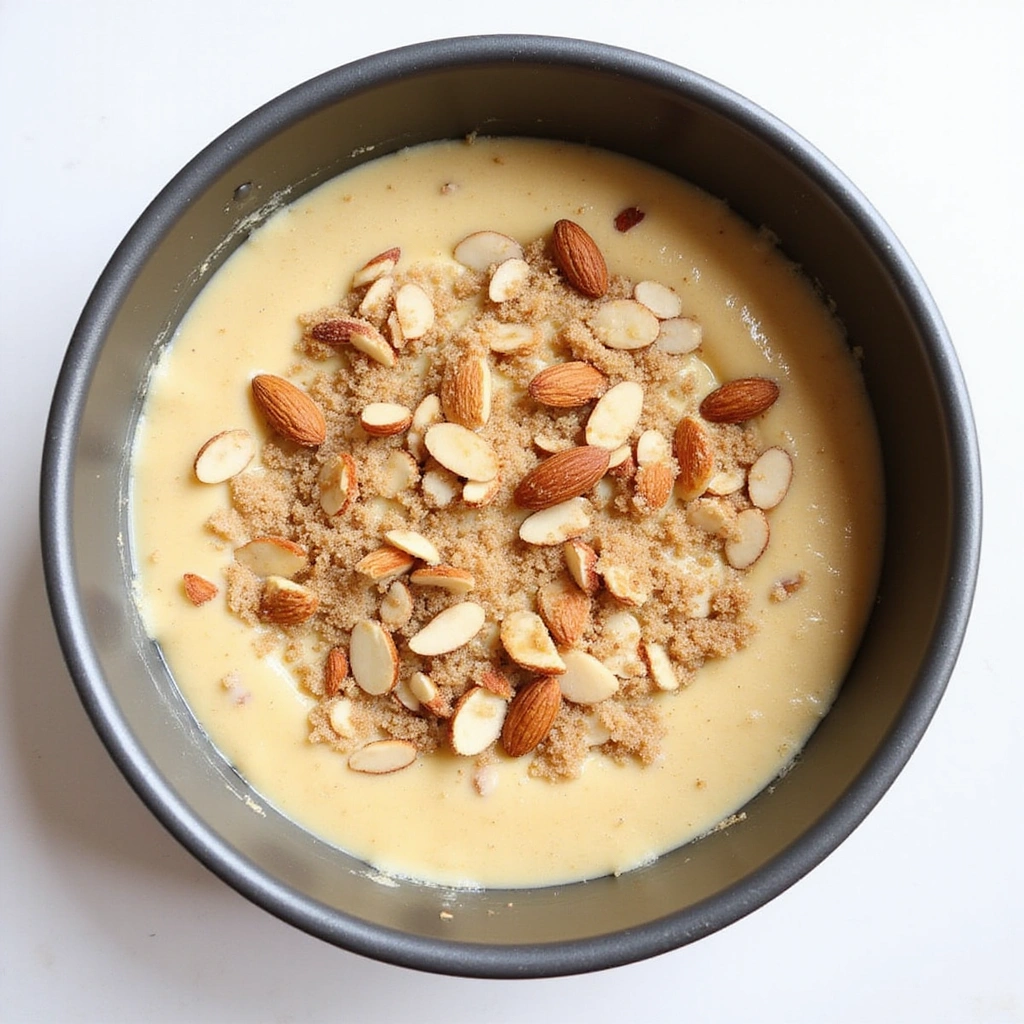
Pour the batter into the prepared cake pan, smoothing the top with a spatula.
Sprinkle the sliced almonds and brown sugar evenly over the top.
This will create a crunchy topping during baking.
Ensure the topping is evenly distributed for consistent texture.
Step 8: Bake the Cake
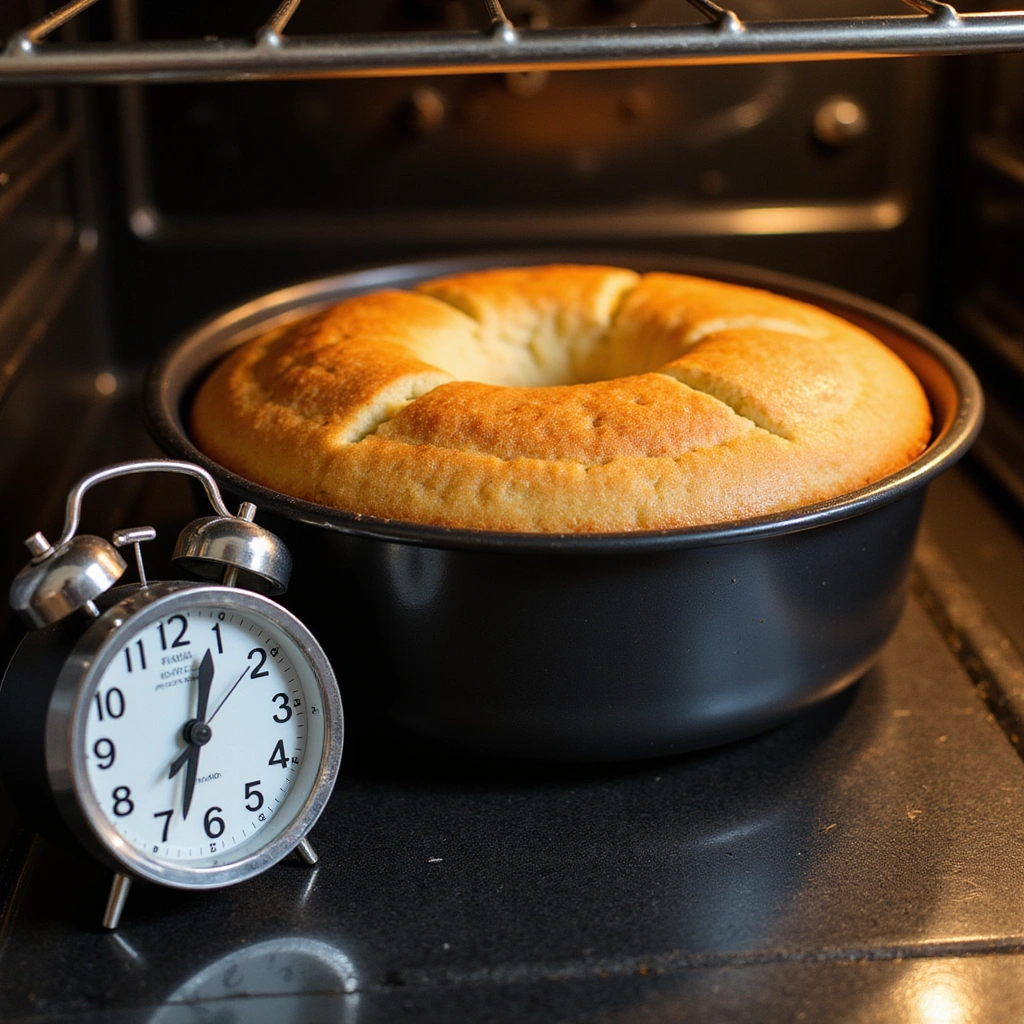
Place the cake pan in the preheated oven and bake for 30-35 minutes.
Check for doneness by inserting a toothpick into the center; it should come out clean.
The cake should be golden brown on top and spring back when lightly pressed.
Avoid opening the oven door too frequently, as this can affect baking time.
Step 9: Cool and Serve
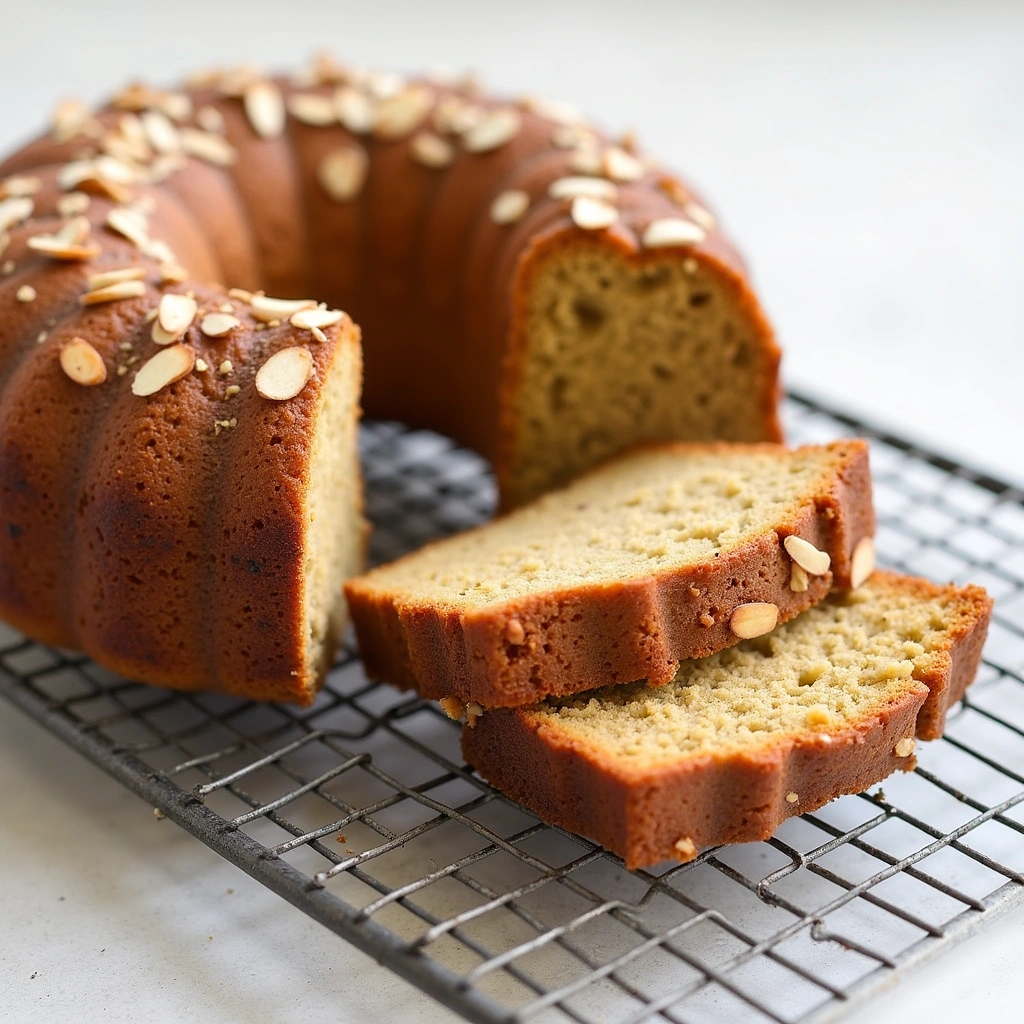
Once baked, remove the cake from the oven and let it cool in the pan for 10 minutes.
Then, gently invert the cake onto a wire rack to cool completely.
This prevents sogginess caused by steam trapped in the pan.
Serve slices warm or at room temperature, dusted with powdered sugar if desired.
Critical Timing and Temperature Guide
Baking Time: Bake the cake for 30-35 minutes at 350°F (175°C). It’s done when the top is golden brown and a toothpick inserted in the center comes out clean. Avoid underbaking, as this can result in a gooey texture.
Cooling Time: Allow the cake to cool in the pan for 10 minutes before transferring to a wire rack. This helps set the structure and prevents crumbling. If it’s too warm, it may fall apart when removed.
Serving Temperature: This cake can be served warm or at room temperature. Serving it slightly warm enhances the flavors and texture.
Pro Tips for Almond Flour Coffee Cake Recipes Gluten Free And Moist
• Ingredient Selection: Use high-quality almond flour made from blanched almonds for the best texture and flavor. Fresh ingredients, especially eggs and buttermilk, enhance the final product.
• Preparation Secret: Allow your eggs and buttermilk to come to room temperature before mixing, as this helps create a smoother batter and improves texture.
• Temperature Management: Ensure your oven is fully preheated before baking to achieve even cooking and a proper rise. An oven thermometer can help ensure accuracy.
• Texture Enhancement: Gently fold the batter instead of mixing vigorously to maintain the air bubbles created during the creaming process, resulting in a light cake.
• Flavor Layering: Consider adding a splash of almond extract for an intensified almond flavor that complements the almond flour.
• Make-Ahead Strategies: You can prepare the batter a day in advance and refrigerate it until ready to bake, but allow it to come to room temperature before baking.
• Restaurant-Quality Finishing Touches: Dust the cooled cake with powdered sugar and serve with fresh berries or whipped cream for an elegant presentation.
• Equipment Optimization: If using a metal pan, consider reducing the baking time slightly to prevent overbaking, as metal conducts heat more efficiently than glass.
Troubleshooting Common Issues
• Texture Too Dense: This can occur from overmixing the batter or using too much almond flour. Recognize this by its heavy, compact feel. To prevent it, mix until just combined and measure accurately.
• Uneven Baking: If the cake is browning unevenly, it might be due to an uncalibrated oven or incorrect pan placement. Check your oven temperature and rotate the pan halfway through baking for even results.
• Dry Cake: A dry texture usually results from overbaking or not enough moisture. To fix this, check the cake a few minutes before the recommended time and ensure you are using the correct amount of buttermilk.
• Too Sweet: If the cake is overly sweet, consider reducing the sugar by a quarter cup next time. Taste the batter before baking to adjust sweetness to your preference.
• Sticking to the Pan: This can happen if the pan isn’t greased adequately or if it’s too hot when the batter is poured in. To solve it, ensure proper greasing and let the pan cool slightly if necessary before pouring the batter.
Variations and Regional Differences
• Almond Spice Variation: In this variation, additional spices like nutmeg and cardamom are added to create a warming flavor profile, inspired by traditional spice cakes.
• Fruit-Studded Variation: Incorporate fresh fruits such as blueberries or diced apples into the batter for added moisture and flavor, making it a delightful twist.
• Coffee-Infused Version: Adding brewed coffee to the batter enhances the cake’s richness and creates a sophisticated flavor, perfect for coffee lovers.
• Modern Interpretations: Health-conscious bakers may use alternative sweeteners like maple syrup or coconut sugar, as well as incorporating protein powders for added nutrition.
Food Science Behind the Recipe
• Moisture Retention: Almond flour retains moisture better than traditional flour due to its higher fat content, resulting in a moist cake. This is crucial for gluten-free baking as it prevents dryness.
• Structure and Binding: Eggs provide structure and stability in gluten-free cakes, helping to bind the almond flour together. Knowing the right number of eggs to use is key for achieving the desired texture.
• Leavening Agents: Baking powder releases carbon dioxide when heated, which creates air pockets in the cake. This is important for achieving a light and fluffy texture, especially in gluten-free recipes.
Frequently Asked Questions
What’s the most common mistake people make when preparing Almond Flour Coffee Cake? The most common mistake is overmixing the batter, which can lead to a dense cake. Always mix until just combined to maintain lightness.
Can I prepare components of this dish in advance? Yes, you can prepare the batter a day in advance and store it in the refrigerator. Just allow it to come to room temperature before baking.
How do I adapt this recipe for dietary restrictions? To make it dairy-free, substitute buttermilk with almond milk mixed with a teaspoon of vinegar. For a lower sugar option, use a natural sweetener like stevia.
What’s the best way to store and reheat leftovers? Store in an airtight container at room temperature for up to three days. To reheat, warm slices in the microwave for about 15 seconds or until heated through.
Can I freeze this dish? Yes, wrap slices tightly in plastic wrap and then in aluminum foil to freeze. Thaw overnight in the refrigerator before serving.
What wine or beverages pair best with this dish? A light, fruity white wine or a robust coffee pairs beautifully with the almond flavor, enhancing the overall experience.
How can I scale this recipe up for a crowd? To serve more people, simply double the recipe and use a larger baking pan, adjusting the baking time as needed.
What side dishes complement this recipe best? Fresh fruit salads or whipped yogurt with honey are excellent accompaniments, balancing the cake’s richness with freshness.
How do professional chefs elevate this dish for restaurant service? Professional chefs may add a drizzle of homemade glaze or serve with a scoop of ice cream for a dessert-style presentation.
Serving and Presentation Guide
• Traditional Presentation: Serve slices on a rustic wooden board, garnished with fresh berries and a dusting of powdered sugar. This presentation highlights the cake’s natural beauty.
• Modern Plating Ideas: Use a sleek, white plate to contrast the cake’s color, and drizzle a berry compote around the edge for a contemporary look.
• Accompaniment Suggestions: Pair with a dollop of whipped cream or a scoop of vanilla ice cream to enhance the experience.
• Special Occasion Presentation: For gatherings, consider layering the cake with a light frosting or cream cheese icing, and decorating with edible flowers for a stunning display.
Conclusion
I hope you enjoy making and sharing this Almond Flour Coffee Cake with your loved ones.
Its moist texture and delightful flavor will surely make it a favorite in your home.
Don’t hesitate to experiment with different toppings and variations to make it your own.

